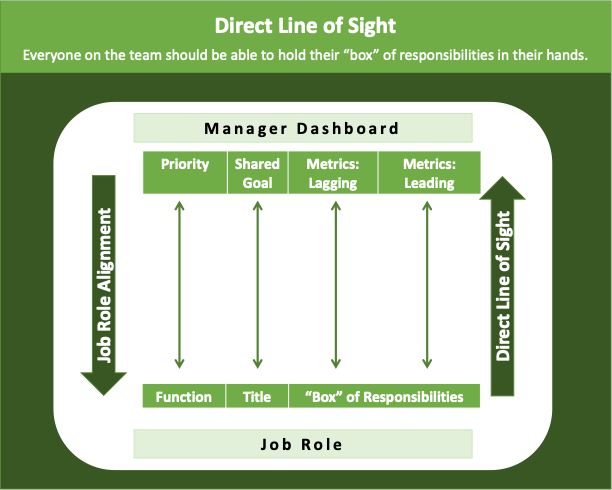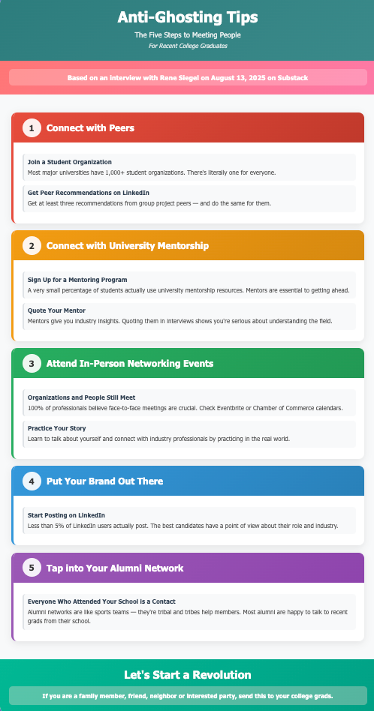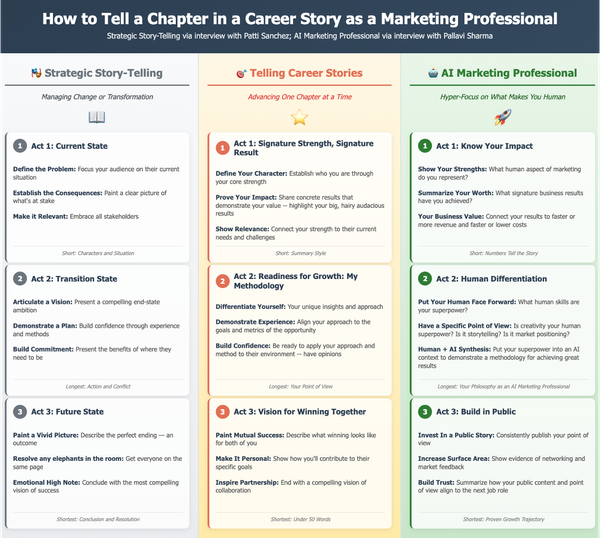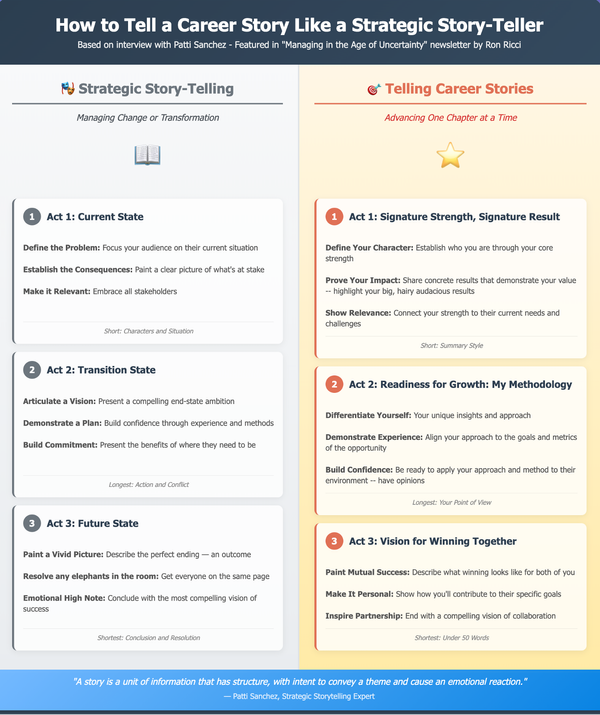What Cisco’s Retired CFO Taught Me about Career Pathways

"Accounting is the language of business."
When my daughter was looking at colleges, we had lunch with Larry Carter, Cisco’s retired CFO who was on the board of Loyola Marymount University in Los Angeles at the time. We wanted to hear about the school, but we left with a life lesson on how to think about career planning for the next generation of talent.
As millennials and gen-z become the largest cohorts inside organizations, career planning has shifted dramatically; in fact, it’s been turned upside-down.
Unlike boomers, who relied on the corporate ladder to provide a pathway — in the form of documented grade levels on the ladder, rung-by-rung — the next generation knows AI and the era of efficiency have made the ladder an obsolete management concept.
Instead, millennials and gen-z see their careers as a “story,” one chapter at time — with the hope of writing a career-best-seller over many years of working.
For millennials and gen-z, the centerpiece of writing a chapter in a career story comes down to how well a role on a team aligns to an opportunity to be recognized and rewarded. As I’ve said, we boomers need to cut millennials and gen-z some slack when they move from one job to another faster than we might have in our careers. It is not for the reasons we often hear about.
This generation knows a team without alignment is going nowhere for them. The odds of getting recognized for great work are simply lessened. Aligning a role and its box of responsibilities to a manager’s priorities, goals and metrics is the foundation to enabling people on a team to write chapters in a career story — and give them a chance to prove they are ready to take on more, to advance.
Based on my research, a chapter in a career story should connect five dots (see below as reminder) for anyone working on a team— to increase the likelihood that a job role can demonstrate growth and lead to advancement. In this issue of Managing in the Age of Uncertainty, I’m continuing my five-part series on each of the dots to help managers understand what “career as a story” means to millennials and gen-z — and how to excel at it as a manager.
The third of the five dots asks this question: Does my job role demonstrate a pathway?
It’s why Larry Carter’s comment is so important. How do you know if a job role has a pathway? As a manager, what do you need to do to help your people align a job role to a pathway? How can you get your people excited to do their jobs — because they can see an opportunity to grow?
The “Scale Out, Scale Up” Test
When I asked Larry to tell us more, he told us that every function inside a company operates on a budget. While every function in a company is different, what they all have in common is the essential role of spending money and accounting for it.
What I took away from talking to Larry was the idea that certain job roles with certain skill sets have more than one pathway— because the skill set is equally valuable in another role in a different function. The way for a manager to help their people discover if their current job role has multiple career pathways is to take what I’m calling, the “Scale Out, Scale Up” test.
If you are a manager, ask your people to answer these questions in your next 1:1:
- Scale Out Test: Have people in your current job role with similar skills been able to find growth and advancement in functions outside the current function? Do people grow and advance into different industries in related roles that require the same or similar skill set? Can you find 10 examples?
- Scale Up Test: Can you identify management or leadership roles with ever-increasing levels of responsibility that leverage the skill skill in your current job role? Can you find 10 examples?
In this sense, accounting is the mother of dozens of different career paths. In other words, accounting is a job role that scales out, giving people a chance to see many different avenues of growing and advancing.
For example, accounting scales out to at least ten related roles in organizations:

Accounting also scales up to some of the most important management and leadership roles in an organization. Scaling up means opportunities to take on more responsibility and earn higher compensation.
Many of these roles ultimately lead to CEO or Partner roles:

Be a Career Dot Connector
In the end, the most important way a manager can develop their people today is to help them “connect the dots” to a chapter in a career story. Some functions can more easily answer the “Scale Out, Scale Up” test, especially finance, sales and engineering.
The idea behind the test is about making sure people can see their future. For some, it might be difficult to see a role beyond the current role, no matter how talented they are.
But that’s why managers are managers. Your people will love you for the “Scale Out, Scale Up” test. It may likely be the most concrete career planning discussion they’ve ever had, whether they find 25 paths or a just handful. Either way, it will get your best people thinking about their opportunities and motivate them them to exceed expectations on your dashboard — exactly what you want as a manager.
Reminder: The 5 Dots Framework

Manager Thought of the Week
“Work has to feed the soul.”
One of the best outcomes of writing this newsletter is the amazing people I’m connecting with or reconnecting with. One of those people is Jeff Cristee, a sales guru/leader who worked on the same team as me in my last five years at Cisco. Jeff’s teams always out-performed — so I asked him about his secret. Here’s what he said:
- “I believe in what I call ‘workload mapping.’ I want my people to capture when you say – I LOVE MY JOB. What have you done that made you feel this way? What workload triggered the emotions? Sometimes we need to do workloads we don’t like. When those workloads start to creep into more than a third of your time, you’ll never be great at your job. Take stock of your workloads at the end of the day. Most of us can’t be great at things we hate. Work has to feed the soul.”
In Summary: Principles of Managing in the Age of Uncertainty
- I left Cisco to answer this question with research and evidence: What does the manager of the future look like? What are millennials and gen-z seeking in a manager? Which behaviors, tactics, skills or processes matter? What’s it going to take to attract and keep the best people over the next decade? In short, how to be a great manager.
- Based on this research, the core philosophy of this newsletter is rooted in one idea: successful managers in this moment in time, for this generation of talent, need to be “career dot-connectors.” The next-gen doesn’t expect to spend their entire career on your team — that’s an idea boomers grew up with. A job on your team is like a chapter in a career story to the current generation. If you want the best people on your team, you have to connect the dots between roles on the team and the career opportunities of the people working on the team.
- What is the“Age of Uncertainty”? If the industrial age was about taking predictable steps up the ladder, the age of uncertainty is about finding or discovering the path of a career without any predictable steps, without an obvious ladder — it’s why being a career dot-connector will differentiate you as a manager.
- How to be a Great Manager in the Age of Uncertainty: Be a Career Dot Connector is available on Amazon.
- What kind of manager are you? Take my free self-assessment and learn about yourself.




